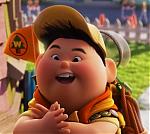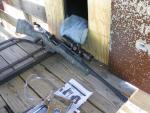Googling around , you see lots of knifes labeled "bushcraft knifes" most of them look like stiff/strong kitchen knifes. Like the Mora varieties.
What makes them "ideal" for bushcraft? what is the criteria? Or would you guys say its anything that can effectively cut sticks and branches and the rest is mostly marketing?
Here is what I've got for knifes right now.
Guests can not see images in the messages. Please register in the forum.
- Grohman Outdoor Dream
Guests can not see images in the messages. Please register in the forum.
- Alce brand knife. Bought this when I was 14 with paper route money. Handle has always felt small, but I keep it around.
Guests can not see images in the messages. Please register in the forum.
- I really like this one. I have to assume it was home made and is likely over 60 or 70 years old. Grandmother gave it to me after my Grandfather died,but I have no idea of its history.
Sorry for the out of left field non direct question. Still learning.





 Reply With Quote
Reply With Quote












Bookmarks